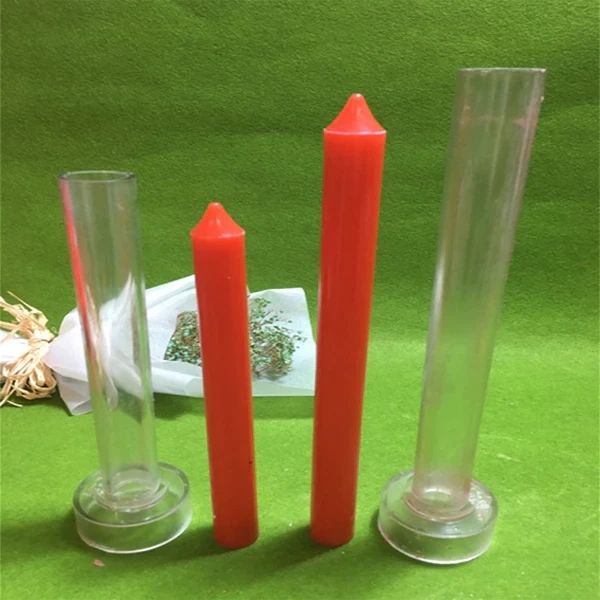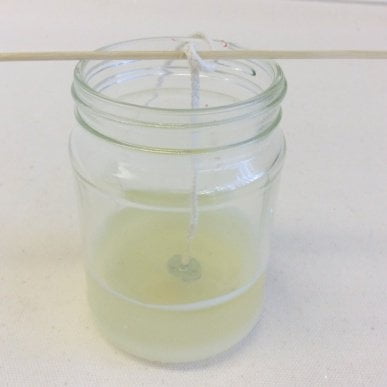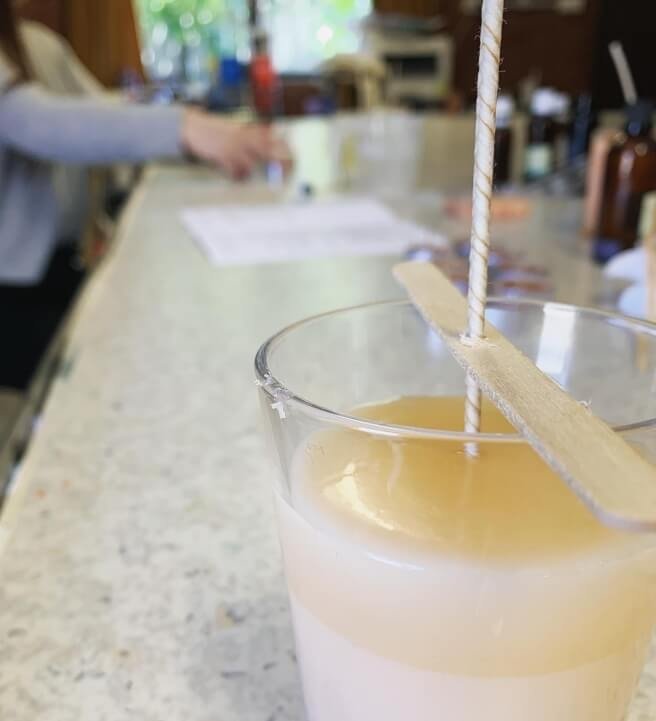Candle making has become a popular hobby for many individuals seeking a creative outlet and unique way to express themselves through scents and designs. One common question that often arises is: is candle making expensive? This article will delve into the world of candle making, exploring the costs associated with this craft and providing insights on how to make it a budget-friendly endeavor.
Many enthusiasts are drawn to candle making for various reasons, including the ability to customize scents, colors, and shapes of candles. Not only does it offer a creative outlet, but it also allows individuals to create personalized gifts for loved ones or even start a small business selling their creations. However, before diving into this craft, it’s essential to understand the expenses involved in candle making and how to manage them effectively.
In this article, we will explore the benefits of making your own candles, the costs associated with this hobby, ways to save money on supplies, and compare DIY candle making versus purchasing ready-made candles. By the end of this comprehensive guide, readers will have a better grasp of whether or not candle making is an expensive venture and how they can approach it economically. Let’s illuminate the world of candle making together.
Benefits of Making Your Own Candles
Candle making can be a rewarding and cost-effective hobby that allows individuals to create custom candles tailored to their preferences. There are many benefits to making your own candles, including the ability to control the ingredients used, the customization of scents and colors, and the satisfaction of creating something handmade. Additionally, homemade candles make for unique gifts that showcase creativity and thoughtfulness.
Here are some key advantages of making your own candles:
- Customization: One of the biggest advantages of DIY candle making is the ability to customize every aspect of the candle, from choosing the type of wax to selecting specific fragrances and colors. This level of personalization allows for creating unique candles that reflect individual tastes and preferences.
- Quality Control: When making your own candles, you have complete control over the quality of ingredients used. You can choose high-quality waxes, essential oils, and additives, ensuring that your candles burn cleanly and emit pleasant scents without any harmful chemicals.
- Creative Expression: Candle making offers a creative outlet for expressing yourself through scent combinations, decorative elements, and packaging design. It allows you to experiment with different techniques and styles to create one-of-a-kind candles that reflect your creativity.
While some may question whether candle making is an expensive hobby, it ultimately depends on how you approach it. The initial investment in supplies such as wax, fragrance oils, wicks, containers, and tools may seem costly at first glance.
However, when you consider the long-term savings from creating your own candles compared to purchasing them from stores regularly, DIY candle making can actually be a cost-effective and enjoyable craft. By sourcing materials strategically and implementing money-saving tips, you can indulge in candle making without breaking the bank.
Costs Associated With Candle Making
Candle making, like any hobby or craft, comes with its own set of costs. While it can be a relaxing and enjoyable activity, it is important to consider the expenses involved in order to make an informed decision about whether or not candle making is the right hobby for you. In this section, we will explore the costs associated with candle making and provide a breakdown of the expenses involved.
When considering the costs of candle making, it’s important to factor in all the materials needed to create your candles. Some of the basic supplies required for candle making include wax, fragrance oils, wicks, containers, and dyes. These items can vary in price depending on quality and quantity. Additionally, tools such as a double boiler, thermometer, and stirring utensils may also need to be purchased if you don’t already have them on hand.
To give you a better idea of what to expect in terms of expenses when starting out with candle making, here is a breakdown of some typical costs involved:
- Wax: $10 – $20 per pound
- Fragrance Oils: $5 – $15 per ounce
- Wicks: $5 – $10 for a pack
- Containers: $2 – $5 each
- Dyes: $3 – $10 per color
Considering these initial costs can help you determine if candle making fits within your budget. While it may seem like there are many expenses involved in getting started with candle making, there are ways to save money on supplies without compromising on quality or creativity. Let’s explore some tips for budget-friendly candle making next.
Breakdown of Expenses in Candle Making
Candle making can be a rewarding and enjoyable hobby, but it also comes with some expenses. Understanding the breakdown of expenses in candle making is essential for those who want to pursue this craft without breaking the bank. One of the key factors that contribute to the cost of candle making is the quality of materials used. High-quality wax, fragrance oils, wicks, dyes, and jars can all add up to a significant portion of your budget.
Another aspect to consider when looking at the expenses of candle making is the equipment needed. While some basic tools like a double boiler, thermometer, and measuring cups are essential for beginners, more advanced candle makers may invest in additional equipment such as a heat gun or a wax melter. The initial investment in these tools may seem high, but they can last for many years if well-maintained.
Moreover, packaging and labeling are aspects that should not be overlooked when calculating the costs of candle making. Presentation plays a significant role in marketing your candles, so investing in attractive packaging and high-quality labels can help increase your sales. Additionally, shipping costs should be factored into the overall expenses if you plan on selling your candles online or at markets. Despite these various costs associated with candle making, there are ways to minimize expenses without compromising on quality.
| Candle Making Expense Category | Average Cost Range |
|---|---|
| Materials (wax, fragrance oils, wicks) | $50 – $100 per batch |
| Equipment (double boiler, thermometer) | $20 – $50 initially |
| Packaging and Labeling | $1 – $5 per candle |
| Shipping Costs | Varies based on location and quantity |
Ways to Save Money on Candle Making Supplies
Candle making can be a fun and rewarding hobby, but one concern that many beginners have is whether it is an expensive endeavor. The truth is, like any hobby or craft, the cost of candle making can vary depending on the materials you choose to use and how you go about sourcing them. While some aspects of candle making can be costly, there are several ways to save money on supplies without compromising on quality.
One way to save money on candle making supplies is to buy in bulk. Purchasing wax, wicks, fragrance oils, and containers in larger quantities often results in a lower cost per unit. Many suppliers offer discounts for bulk purchases, so consider teaming up with fellow candle makers or buying larger quantities for future projects to take advantage of these savings. Additionally, buying in bulk reduces the frequency of purchasing supplies, which can save time and money in the long run.
Another cost-saving tip for candle making is to repurpose items you may already have at home. Instead of investing in expensive molds or containers specifically designed for candles, look around your house for items that can serve the same purpose. Mason jars, old tins, and even tea cups can make unique and stylish containers for candles. Repurposing old candles by melting down leftover wax and reusing wicks is another eco-friendly way to save money while reducing waste.
Lastly, consider exploring local options for purchasing supplies. Craft stores often carry a wide range of candle making supplies at competitive prices. Additionally, visiting thrift stores or yard sales may yield hidden gems like vintage containers or unique molds at a fraction of the cost. By thinking outside the box and being resourceful in sourcing materials, you can enjoy the creative process of candle making without breaking the bank.
| Tip | Benefits |
|---|---|
| Buy Supplies in Bulk | Lower cost per unit |
| Repurpose Items at Home | Eco-friendly and cost-effective |
| Explore Local Options | Finding unique materials at affordable prices |
Comparison of DIY Candle Making vs Buying Candles
Candle making has been a popular hobby for many individuals looking to create unique and personalized candles. One common question that arises is whether candle making is an expensive endeavor compared to simply buying candles from stores. In this section, we will delve into the comparison of do-it-yourself (DIY) candle making versus purchasing candles commercially.
Cost Comparison
When comparing DIY candle making with buying candles, the initial cost outlay for starting your own candle-making venture might seem more expensive. Purchasing candle-making supplies such as wax, wicks, fragrance oils, and containers can add up quickly.
However, in the long run, making your own candles can be more cost-effective as you can produce multiple candles from one batch of supplies. Additionally, you have the flexibility to choose high-quality ingredients and customize your candles to suit your preferences.
Quality Control
Another factor to consider in the comparison is the quality of the candles produced. By making your own candles, you have complete control over the ingredients used and the production process. This allows you to create higher-quality candles compared to some mass-produced commercial options. You can choose natural waxes, premium fragrance oils, and eco-friendly materials without compromising on quality. Ultimately, this may result in a higher value for your money in terms of both aesthetics and performance.
Personalization and Creativity
One significant advantage of DIY candle making over buying commercial candles is the ability to personalize and get creative with your creations. When you make your own candles, you can experiment with different scents, colors, shapes, and sizes to match your preferences or create unique gifts for friends and family.
This level of personalization is often not possible when purchasing pre-made candles from stores where options may be limited. Overall, while there are initial costs involved in DIY candle making, the ability to tailor-make candles according to your liking makes it a valuable and worthwhile investment for many enthusiasts.
Tips for Budget-Friendly Candle Making
When it comes to candle making, one of the foremost concerns for enthusiasts is cost. Many aspiring candle makers wonder, “Is candle making expensive?” The truth is that while there are costs associated with this hobby, there are also numerous ways to keep expenses down and engage in budget-friendly candle making. By implementing some smart strategies, you can enjoy the art of creating your own candles without breaking the bank.
Shop Smart for Supplies
One key aspect of keeping candle making affordable is to shop smart for supplies. Look for bulk discounts on wax, wicks, fragrance oils, and containers. Buying in larger quantities can often result in significant savings per unit. Additionally, consider shopping online for deals and promotions on candle making supplies. Many websites offer discounts and sales regularly, allowing you to stock up on essentials at a lower cost.
Utilize Household Items
To further cut down on expenses, consider utilizing household items as candle-making supplies whenever possible. For example, repurpose old jars or containers as vessels for your candles. Instead of buying expensive molds, get creative with silicone ice cube trays or muffin tins to create unique shapes and sizes. Repurposing materials not only reduces costs but also adds a personal touch to your creations.
DIY Decorative Elements
Another way to save money on candle making is by DIY-ing decorative elements for your candles. Instead of purchasing pre-made labels or embellishments, try your hand at designing and printing them yourself. Invest in a quality printer and adhesive paper to create custom labels at a fraction of the cost.
You can also experiment with different packaging ideas using inexpensive materials like twine, ribbon, or recycled paper. Personalizing your candles with homemade decorations adds charm while keeping costs low.
Real-Life Examples of Candle Making Expenses
When considering the expense of candle making, it is essential to delve into real-life examples of the costs associated with this craft. One of the major expenses in candle making is purchasing the raw materials needed to create candles. These include wax, wicks, fragrance oils or essential oils, dyes or colorants, and containers.
Depending on the quality and quantity of these materials, the cost can vary significantly. For example, high-quality soy wax can be more expensive than paraffin wax, but it may burn cleaner and last longer.
Another aspect to consider when calculating candle making expenses is the equipment required for the craft. This includes items such as a double boiler or a microwave-safe container for melting wax, a thermometer to monitor temperatures, stirring utensils, a scale for measuring ingredients accurately, and mold releases if using molds for candles. While some of these items may be one-time purchases, they contribute to the overall cost of candle making.
Furthermore, factoring in additional costs like packaging materials (such as labels or boxes) and marketing expenses if you plan to sell your candles can also impact the affordability of candle making. It is crucial to have a clear understanding of all these expenses before embarking on your candle making journey to ensure you stay within your budget while still enjoying this creative process.
Conclusion
In conclusion, the question “Is candle making expensive overall?” is not a simple one to answer. While there are costs associated with purchasing supplies and equipment for candle making, the benefits of creating your own candles can outweigh the expenses. By being mindful of where you source your materials and utilizing money-saving tips, you can make candle making a cost-effective hobby or even a small business venture.
When considering the costs associated with candle making, it’s important to remember that initial investments in tools and supplies may seem high. However, as you continue to create candles, the cost per unit decreases significantly. Additionally, homemade candles are often of higher quality than store-bought ones, offering a more personalized and unique touch to your living space or as gifts for others.
Ultimately, the decision of whether candle making is expensive depends on your perspective and goals. If you are looking for a creative outlet and enjoy crafting personalized items while saving money in the long run, then candle making can be a rewarding and affordable hobby. By exploring different suppliers, utilizing discounts and sales opportunities, and experimenting with various techniques, you can find ways to reduce costs without compromising on quality.
So, is candle making expensive? It doesn’t have to be if approached smartly and strategically.
Frequently Asked Questions
Is It Cheaper to Make Your Own Candles?
Making your own candles can be cheaper compared to buying candles from stores, especially if you purchase materials in bulk. By DIY-ing your candles, you have control over the quality of ingredients used, allowing you to make cost-effective choices.
Is Candle Making an Expensive Hobby?
Candle making can be an expensive hobby depending on the materials and equipment you choose to use. Initially, there may be a higher investment for items like wax, fragrance oils, wicks, and molds. However, over time, as you gain experience and buy in bulk, the cost per candle decreases.
Is It Worth Making Candles Profitable?
Whether candle making is worth it in terms of profitability depends on various factors such as your skill level, marketing strategies, and target market. With dedication and creativity, it is possible to turn candle making into a profitable venture by selling unique and high-quality products through online platforms or local markets.

Welcome to my candle making blog! In this blog, I will be sharing my tips and tricks for making candles. I will also be sharing some of my favorite recipes.





